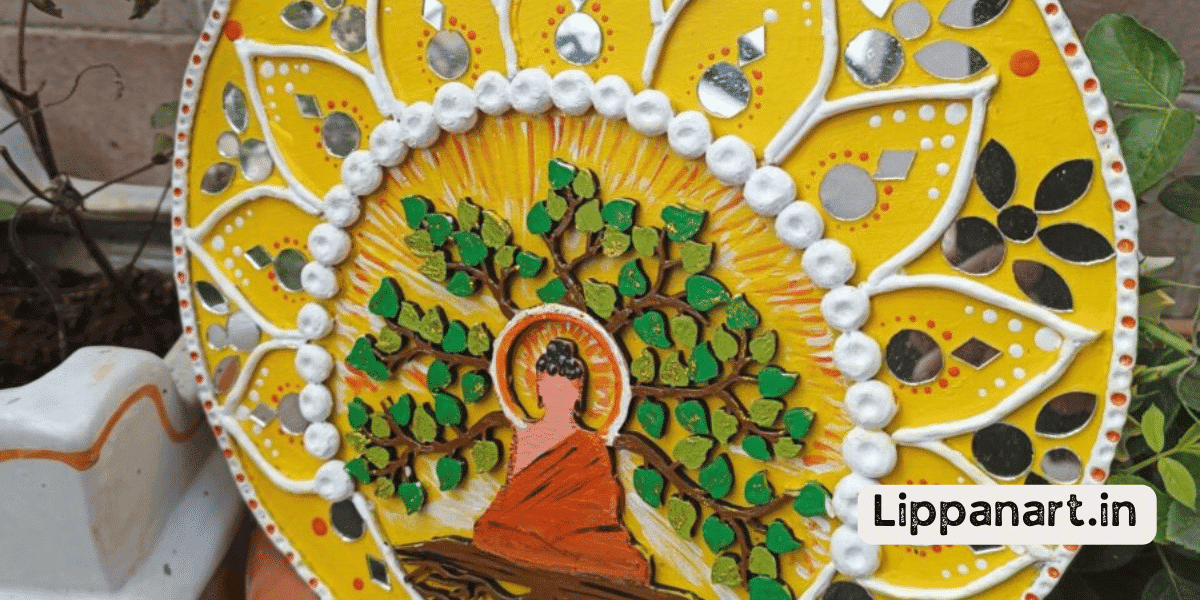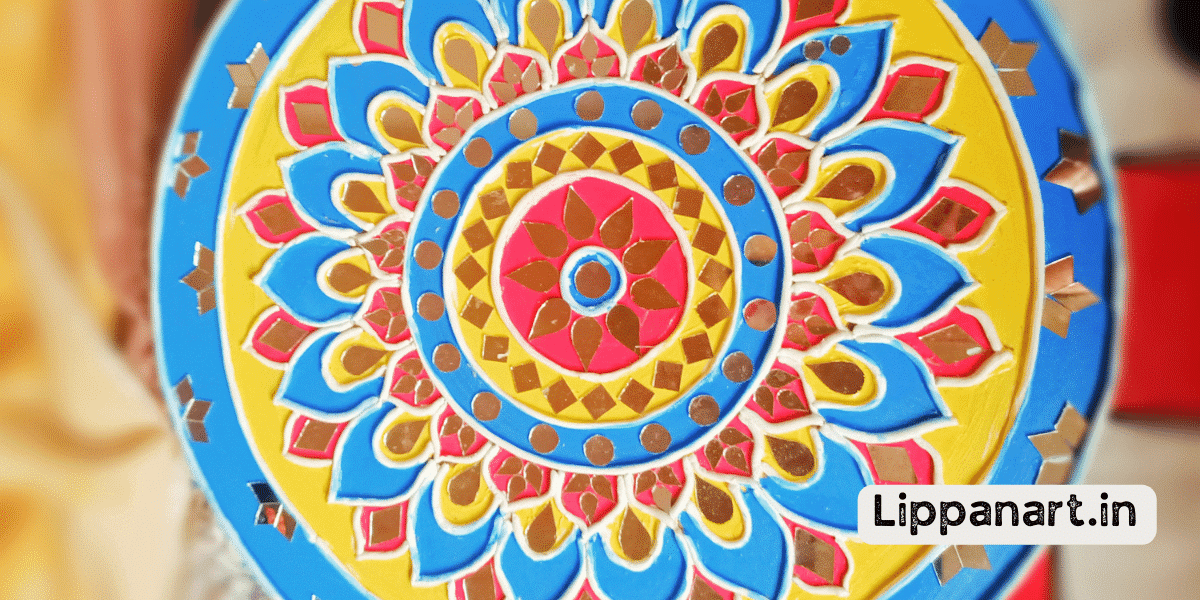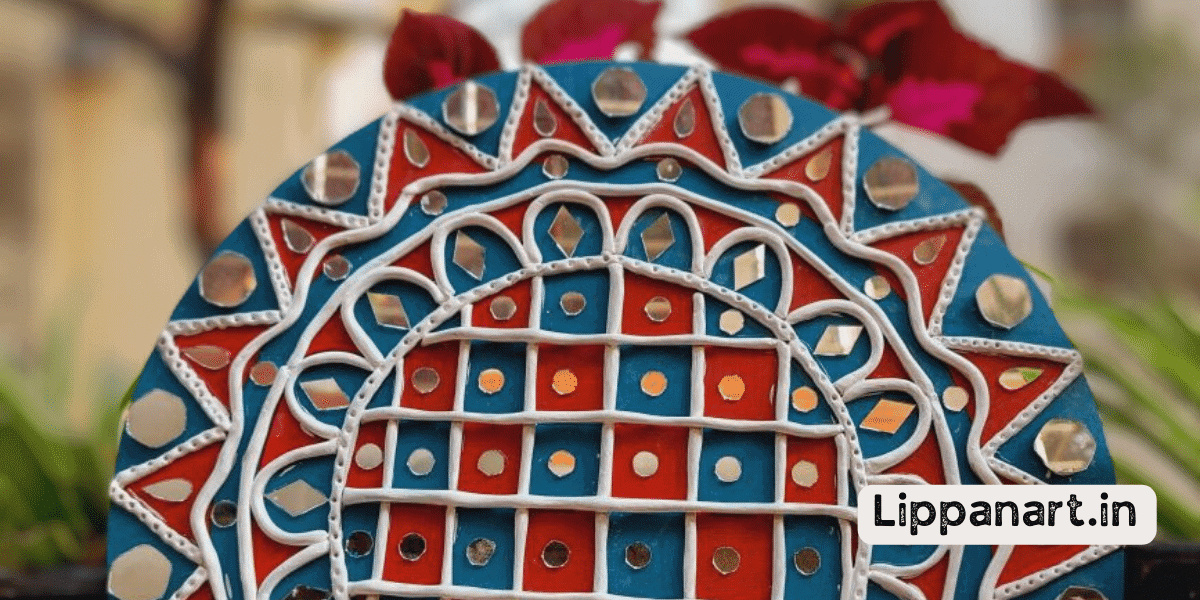Did you know that Indian art is one of the oldest in the world, dating back over five thousand years?
From its spiritual roots to its cultural influences, art has been integral to Indian culture.
Explore art’s power to unite people, foster dialogue, and promote social change.
With its aesthetic value, art has the potential to revolutionize the way we think and act.
Let’s take a journey through the importance of art in Indian culture.
History of Indian Art
You have to see it to believe it! Indian art has a long and varied history, showcasing the country’s unique culture and traditions. India’s art forms are renowned for their intricate detail, vibrant colours, and innovative designs, from sculptures, paintings, and carvings to textiles, jewellery, and architecture.
With its rich heritage and cultural significance, Indian art is highly valued and appreciated worldwide. It is a reflection of India’s culture and serves as a reminder of the country’s history and values. By exploring India’s art, one can better understand its people and their culture.
Through its art, India has been able to share its culture and heritage with the rest of the world, making it an integral part of global art forms and styles. Indian art is more than just aesthetics; it is a source of pride, inspiration, and cultural exchange.
Contribution to Indian Art
Seeing Indian art helps to bridge cultural divides and brings people together through shared appreciation. Indian art forms, including painting, sculpture, music, and dance, have inspired generations and impacted the rest of the world. They offer a unique insight into the country’s culture and traditions, fostering understanding, appreciation, and respect.
Indian art has also contributed to developing global art forms and styles, becoming a source of national pride. The country’s rich artistic heritage has had a positive economic impact, providing opportunities for artists and craftspeople to make a living. It has also become an important part of India’s tourism industry, as visitors worldwide seek to experience its unique culture and art. Indian art serves as a tool for cultural diplomacy, representing the country’s traditions and values and strengthening diplomatic ties with other nations.
Moreover, Indian art encourages creativity and innovation, providing a platform for artistic expression and experimentation. It fosters critical thinking and cultural literacy, encouraging dialogue and mutual respect. It creates a personal and emotional connection, evoking nostalgia, joy, and pride.
Spiritual Significance of Art
Experiencing Indian art can be a profoundly spiritual experience, connecting you to the country’s rich cultural history and providing peace and harmony. Indian culture is filled with traditional art forms passed down through generations, including paintings, sculptures, and architecture. Indian art heritage is deeply rooted in spiritualism, with many traditional pieces featuring religious iconography and symbolism. This spiritual connection is often seen in Indian art history, with pieces depicting deities and spiritual figures.
Viewing Indian art can be a powerful experience, as the pieces often evoke a sense of awe and reverence. This spiritual significance can be seen in many traditional art forms, such as Indian paintings depicting gods and goddesses. Indian art is also a way to connect to the country’s cultural past, as each piece has a story. Exploring the spiritual significance of Indian art provides a deeper understanding of India’s cultural heritage.
The spiritual significance of art in Indian culture can be seen in many aspects:
- Connects individuals to the country’s rich cultural history and traditions.
- Evokes feelings of awe and reverence.
- Provides a sense of peace and harmony.
- Enhances understanding of traditional art forms and spiritual iconography.
Cultural Influence of Art
You can feel Indian art’s impact all around the world. From its vibrant architecture and ancient civilizations to its unique style and values, Indian art has profoundly influenced global culture, fostering dialogue and understanding between different nations and communities. From inspiring new art forms to promoting cultural exchange, Indian art has been a driving force in the development of many modern art movements. People of all backgrounds take pride in their cultural heritage, which they can explore and express through this platform.
Indian art has provided a unique perspective on our shared history, allowing us to appreciate the beauty of different cultures and traditions. It has helped bridge cultural gaps, encouraging mutual understanding and respect. By celebrating diversity and promoting inclusivity, Indian art has contributed to a more harmonious and connected world.
Indian art has provided a platform for creativity and innovation. It has inspired many of the world’s most talented artists and provided a space for them to express their unique style. Indian art has also been an important part of the country’s economy, with many craftspeople and artists making a living by selling their work.
The influence of Indian art is unmistakable. Its rich cultural heritage and diverse styles have provided a platform for cultural exchange and understanding. It has encouraged people of all backgrounds to explore their identity and appreciate different cultures’ beauty. Indian art is a testament to the power of creativity and innovation, and its impact will continue to be felt for generations.
Impact of Art on Social Change
Through its unique cultural expression, Indian art has the potential to inspire social change and foster a more inclusive society. In the 21st century, it has become an important part of preserving India’s cultural heritage and advancing its social movements. In particular, it has been used to empower women and give them more social recognition and visibility.
Indian art can be a powerful tool for making social change and creating a more equitable society. Gender inequality, poverty, and lack of healthcare access can be addressed using technology. It can also foster dialogue and understanding among people from different backgrounds and cultures.
By highlighting the importance of cultural heritage, Indian art can be used to promote respect and tolerance for diversity. Moreover, Indian art can be used to bridge cultural divides and bring people together. Through its creative expression, it can promote a sense of unity and belonging and celebrate differences.
Role of Indian Art in Education
Indian art is vital in education, providing students with a unique platform to explore and appreciate India’s cultural heritage. From traditional Indian art forms to modern interpretations, the art of India has a long history and is deeply rooted in the values and beliefs of Indian civilization. It offers students an opportunity to understand the rich cultural heritage of India while also helping to develop critical thinking and analysis skills.
Moreover, the influence of the British Empire is evident in many Indian art forms, making them a great tool for understanding the impact of colonialism on Indian culture.
Indian art provides a platform for students to engage with and understand the culture of India in a meaningful way. It helps to foster respect and appreciation for the country’s cultural values and traditions while encouraging diversity and inclusivity. Through the study of Indian art, students can gain a deeper insight into India’s history and culture, as well as the impact of colonialism.
- Editor’s Choice
- Best Seller
- Amazon Choice
Aesthetic Value of Indian Art
The aesthetic value of Indian art is undeniable. Viewers can explore and appreciate a variety of art forms that reflect India’s rich culture and history.
From intricate carvings to detailed paintings, Indian art uniquely expresses a nation’s identity and people. Experience the beauty of India’s rich heritage through the works of Tagore, literature, and other practices.
You can explore the vast array of styles, themes, and forms of Indian art. Discover how art has been used to tell stories, express emotions, and capture moments. Marvel at the intricate details and vibrant colours characteristic of Indian art.
Uncover the beauty and history of India through its art and see how it has been used to create a sense of pride and belonging. Experience the unique aesthetic value of Indian art and be inspired by its beauty.
Role of Art in Tourism
You can experience the beauty of India’s culture and heritage through its art, which plays an important role in the country’s tourism industry. From ancient Indus Valley sculptures to intricate miniature paintings, India’s art has captivated visitors worldwide for centuries. This art is a tribute to the country’s empires and rich history, showcasing the unique Indian style that has come to define its culture. Indian art is a gateway to the country’s heritage and a way to experience its beauty firsthand.
Visitors can explore museums, galleries, and temples to learn more about India’s culture and art. They can also find a variety of artworks in shops and markets, allowing them to take home a piece of Indian heritage.
Art is essential for India’s tourism industry, as it offers a glimpse into its culture and history. It can be seen in hotels, restaurants, and other public places, as well as in the architecture and decor of the country. Art is a major part of India’s identity, and its tourism role helps promote the country and its culture worldwide.
India’s art is a major source of cultural pride and inspiration, from traditional crafts to contemporary art. It is also a powerful tool for cultural diplomacy and international relations, helping to bridge cultural divides and foster dialogue. Art helps advance India’s reputation as a vibrant, innovative nation and encourages people worldwide to visit and explore its culture.
Art in Festivals and Celebrations
Exploring India’s festivals and celebrations through its art gives you a unique insight into its vibrant culture. Indian art is a part of every celebration, from classical music to contemporary artists. It contributes to the national identity, creating a sense of unity and togetherness. Indian music and architecture are used to decorate festivities, creating a beautiful and diverse atmosphere.
Traditional festivals like Diwali and Holi showcase various art forms, such as sculptures, paintings, and performances. Indian art is also showcased at modern celebrations, such as weddings and birthday parties. Contemporary artists combine traditional elements with modern techniques to create innovative and unique works of art.
Through art, these events become more meaningful and memorable and provide an opportunity for cultural exchange. Indian art can unite and inspire people, creating a sense of pride and belonging.
Legacy of Indian Art
From ancient times to the present day, Indian art has left a lasting legacy that has enriched our lives and the world. From intricate sculptures and carvings to vibrant paintings and textiles, Indian art has been celebrated for centuries. It is a powerful reflection of the country’s cultural identity and religious practices, showcasing the talent and creativity of Indian women and artists.
Indian art has also been a source of cultural exchange, inspiring other cultures in architecture, music, and dance. It has been integral in developing a sense of national identity and pride among India’s people while fostering a sense of global citizenship.
Indian art also serves an important economic purpose, with many artists and craftspeople making a living by selling their work. It has also helped promote tourism, with visitors from around the world coming to experience India’s unique art and culture. Indian art has also been an important part of festivals and celebrations, allowing people of all ages and backgrounds to unite and share in cultural practices.
The legacy of Indian art is more than just aesthetic; it can bring people together and promote understanding. It has the potential to transform lives and challenge preconceptions. As we continue to explore and celebrate the beauty of Indian art, it will continue to shape our lives and the world we live in.
Frequently Asked Questions
What Is the Economic Value of Indian Art?
Indian art has a significant economic value, providing a living for many artists and craftspeople. It also boosts tourism and contributes to the country’s economy, making it an important asset to the nation.
How Does Indian Art Benefit the Community?
Indian art benefits the community in countless ways, from fostering social cohesion and harmony to inspiring creativity and innovation. It’s an incredible source of pride, providing a powerful emotional connection and a sense of belonging. Truly, it’s a magnificent gift that keeps on giving!
What Are the Most Popular Forms of Indian Art?
Popular forms of Indian art include miniature paintings, traditional sculptures, textile art, calligraphy, mehndi, and mural painting. They are admired for their creativity, skill, and cultural value, inspiring innovation and expression in art.
What Is the Role of Technology in Indian Art?
Technology has revolutionized Indian art, allowing artists to create more intricate and detailed works. It has expanded the scope of art, making it more accessible and providing new opportunities to express creative ideas. It’s also allowing us to explore new ways to experience and enjoy art.
How Can Indian Art Be Used to Promote Social Justice?
Indian art can be used to foster social justice by encouraging dialogue, celebrating diversity, and promoting inclusivity. It unites people from different backgrounds and creates a shared understanding of our common humanity.
Conclusion
To conclude, Indian art has been a cornerstone of the country’s culture for centuries. It reflects India’s past, present, and future, and its importance can’t be understated.
Not only does it bring people together, but it also has a deep spiritual significance and provides an invaluable aesthetic experience. Over time, Indian art has evolved and continues to influence the world in myriad ways.
From festivals and celebrations to social change and tourism, Indian art is here to stay and will remain a timeless classic ‘for eternity and a day’.














